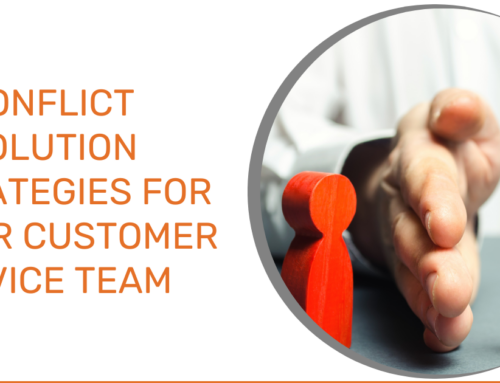Welcome back to our series on customer service challenges! In our last article, we shared advice for handling customer conflicts, with tips to ease the tension and turn disgruntled customers into loyal fans. Now, we’ll address our next customer service challenge: fielding customer service questions.
According to research from HubSpot, 90% of customers think an “immediate” response is essential or very important when they have a customer service question. 60% define “immediate” as 10 minutes or less. These statistics highlight one challenge with customer service questions: customers want answers FAST.
But that’s not the only challenge. Statistics also show that 44% of consumers say they have received a wrong answer from a customer service representative. Since over half of consumers will switch to a competitor after just one bad experience, an incorrect answer might be the tipping point that will cause you to lose a customer. Customers not only want answers FAST but also need them to be accurate.
So, how can you equip your team to answer customer questions quickly and accurately? That’s the topic of this article as we share our best tips for overcoming this customer service challenge. Let’s dive into the details.
3 Best Practices for Customer Questions
Customer questions are one of the main reasons why people contact your customer service department. These best practices will help you train and equip your team with what they need to provide a stellar experience every time.
Empower Your Team with Knowledge
The first thing is to ensure that your team has the knowledge they need to answer questions that come their way. This includes information they know and information they know how to find.
Empowering your team includes:
- Onboarding: Make sure all new hires receive training on your products and services so they know how everything works.
- Internal Database: Develop a thorough, searchable database that contains all the necessary information about your products or services, including FAQs, troubleshooting, product updates, and user manuals.
- Accessible Experts: Establish a system for team members to quickly contact experts or senior staff when they encounter complex questions. For example, you may use an internal chat or a cloud phone system that allows the third party to join the call.
- Continuous Learning: Set up ongoing training programs to keep everyone informed about changes and new releases.
When employees are knowledgeable and have access to information, it increases their ability to provide fast, accurate answers to your customers.
Include Self-Service Options
Research from Zendesk found that 67% of consumers prefer self-service over speaking to a company representative. This is a win-win situation because when customers can find their own answers, it frees up your staff to work on other things.
In terms of self-service options, you can consider:
- Interactive Knowledge Base: Your knowledge base can include articles and guides, such as step-by-step troubleshooting that can help customers solve their own problems.
- FAQs: An FAQ section can provide quick answers to your customers’ most common inquiries, whether it’s about using your product/service, billing, or anything else.
- Tutorial Videos: Visuals help to convey complex information, so whenever it makes sense to ‘show’ rather than just ‘tell,’ consider creating a tutorial video. This can be as simple as a screen share video walking the customer through how to do something.
- Community Forum: If this option makes sense for your business, consider creating a community forum where customers can ask questions and share solutions among themselves.
Whatever self-service options you choose, adding a search function is essential for customers to quickly find the information they need. Use tags, keywords, and metadata so customers get search results relevant to their query.
Offer Multiple Channels

Customers have different communication preferences, and you’ll want your business to be able to provide quick, accurate answers on a variety of channels.
A growing number of consumers are starting to prefer live chat, which is perfect for quick answers to questions and incredibly convenient for your customers. According to Tidio’s research, 41% of people prefer live chat. Telephone comes in second at 32%. Research indicates that younger shoppers (ages 18 to 34) are more likely to choose live chat as their favorite channel.
Speaking of phone-based customer service, not only is it among the most preferred customer service channels, but data from Zendesk also shows that phone support has a 91% customer satisfaction rating, higher than all other customer service methods. A cloud phone system can help you provide a stellar experience when customers call in with advanced features like custom call routing, on-hold messaging, and more.
When choosing your customer service channels, here are some tips to keep in mind:
- Choose Based on Customer Preferences: Understanding customer demographics will help you choose the proper channels. For instance, while younger audiences may prefer live chat, texting, and social media, older customers may lean toward phone and email.
- Set Realistic Response Times: Customers should know what to expect whether they contact you via your website’s live chat, send an email, or make a call. Consider your staff and resources when setting these expectations. We’ll talk more about this in our next article on managing customer expectations.
- Integrate Channels: While you may engage with customers on different channels, you’ll want them all integrated into one ticket management system. This ensures no customer inquiries are lost, communication is tracked, and you can easily take the conversation to other channels when needed.
Handling Customer Service Questions

As your business changes and customer needs evolve, continuously update your approach to handling customer service questions. You may need to retrain your staff, update your knowledge base, or adapt your customer service channels. Keeping your team and tools up-to-date ensures you can continue providing fast, accurate answers to your customers’ queries.
Remember the statistic we shared in our introduction article: 31% of consumers consider a knowledgeable agent to be the most crucial factor for a positive customer experience. By implementing the best practices discussed above, you can equip your staff with the knowledge they need to take care of customers and leave a great impression.
Next up in our series, we’ll look at customer expectations. With expectations at an all-time high and business resources like staff and money stretched thin, it’s important to set, manage, and maintain clear expectations so customers remain satisfied and loyal. For an interesting discussion, be sure to tune in next time!






